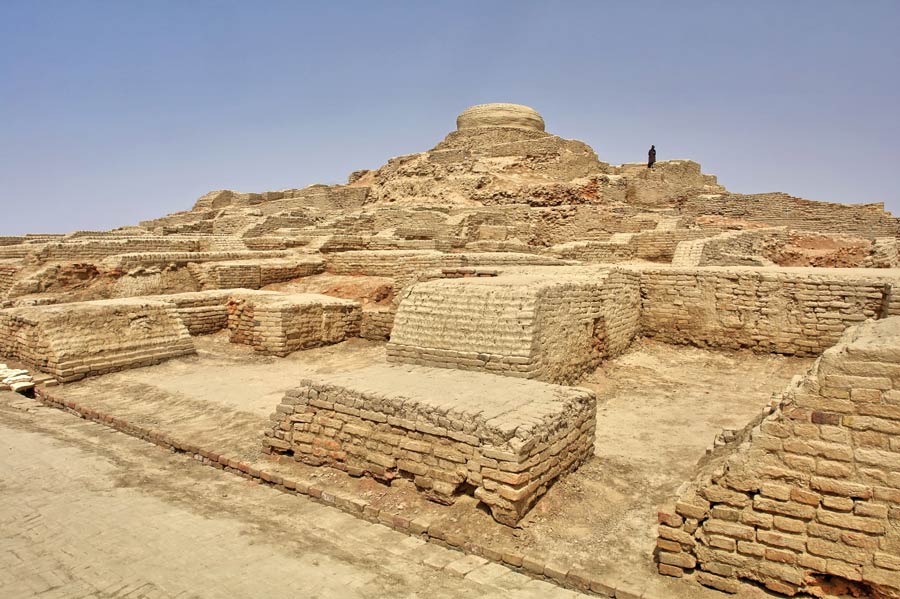
The ancient Indus civilization city of Mohenjo Daro, located in present–day Pakistan, was home to highly skilled urban planners. Evidence of this includes a well–planned street grid and an elaborate drainage system.
Despite the city‘s lack of ostentatious palaces, temples, or monuments, its wealth and stature is evident in artifacts such as ivory, lapis, carnelian, and gold beads, as well as the baked–brick city structures.
The Great Bath, a watertight pool perched atop a mound of dirt, held together with walls of baked brick, is the closest structure that Mohenjo Daro has to a temple. It appears to suggest an ideology based on cleanliness, which is also evidenced by the presence of wells and bathing areas found throughout the city.
Trade was likely controlled by seals and standardized pottery and tools of copper and stone. Ultimately, the inhabitants of Mohenjo Daro demonstrate a reverence for the control of water and order, while also displaying a preference for modesty.
City of Mounds
In 1911, Mohenjo Daro was first visited by archaeologists. Subsequent digs took place in the 1920s to 1931, followed by smaller probes in the 1930s, and then in 1950 and 1964.
Located in the present–day Larkana district of Sindh province in Pakistan, Mohenjo Daro was an important city to the Indus civilization between 2500 and 1900 B.C.
Its area was roughly 250 acres (100 hectares) and featured a series of mounds, with the Great Bath and a large building situated atop the highest one.
According to Jonathan Mark Kenoyer, an archaeologist from the University of Wisconsin, Madison, these mounds grew gradually over time as people constructed platforms and walls for their homes. It is believed that Mohenjo Daro was a city–state, possibly with elected officials or elites from each of the mounds.
Prized Artifacts
The discovery of a miniature bronze statuette of a nude female, known as the dancing girl, in 1926 caused great excitement among archaeologists. But for Dr. Kenoyer, the discovery of a few stone sculptures of seated male figures, such as the intricately carved and colored Priest King, was even more intriguing.
All the sculptures were found in broken pieces, leading Kenoyer to suggest that someone at the end of the Indus period had destroyed them. However, the cause of the collapse of the Indus civilization and Mohenjo Daro remains a mystery.
Kenoyer theorizes that a change in the course of the Indus River may have impacted the local agricultural economy and the city‘s importance as a trading center. Although this could have contributed to its decline, it does not explain why the civilization ended so suddenly.
According to Possehl, the Indus Valley culture changed around 1900 B.C., but the reason behind this remains unknown.
Leave a Reply